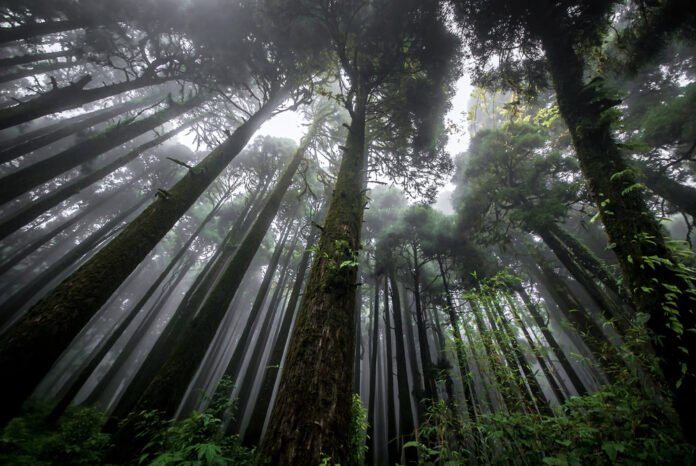Monsoon Photography Tips
The monsoon season brings with it a unique charm that transforms the landscape into a lush, vibrant wonderland. The rain-soaked environment, dramatic skies, and refreshing greenery provide endless opportunities for photographers to capture stunning images. Here are some comprehensive tips to help you make the most of monsoon photography and capture the beauty of the rainy season.
Also Read: Monsoon Health Tips: Staying Healthy and Hygienic While Traveling
1. Embrace the Elements
- Rain Gear for Your Camera: Invest in a good quality rain cover or waterproof housing for your camera to protect it from moisture. Keep a lens cloth handy to wipe off any water droplets.
- Personal Protection: Wear waterproof clothing and boots to keep yourself dry and comfortable while shooting. An umbrella can also be a useful accessory.
2. Understand the Lighting
- Diffuse Light: The overcast skies during monsoon act as a giant softbox, providing diffuse and even lighting. This is perfect for eliminating harsh shadows and creating a soft, moody atmosphere.
- Golden Hour: The golden hour after a rain shower can produce stunning light. The low-angle sunlight filtering through the remaining clouds can create a magical glow.
3. Play with Reflections
- Puddles and Water Bodies: Look for puddles, ponds, and other water bodies to capture reflections. These can add depth and interest to your photos.
- Urban Reflections: Wet city streets can reflect neon lights, street lamps, and traffic, creating vibrant and dynamic urban shots.
4. Focus on the Details
- Macro Photography: The rainy season brings out small wonders like raindrops on leaves, flowers, and spider webs. Use a macro lens to capture these intricate details.
- Textures and Patterns: Look for the unique textures and patterns created by the rain on various surfaces. This can include water droplets on glass, ripples in puddles, and wet bark on trees.
5. Capture the Mood
- Emotional Elements: Rainy days often evoke a range of emotions from joy to melancholy. Capture people enjoying the rain, children playing, or someone gazing out of a window.
- Dramatic Skies: The monsoon season often brings dramatic cloud formations. Wide-angle shots of the sky can add a sense of scale and drama to your images.
6. Experiment with Shutter Speeds
- Freezing Motion: Use a fast shutter speed to freeze the motion of raindrops. This can create sharp, crystal-clear images of individual drops.
- Long Exposures: Slow down your shutter speed to capture the motion of falling rain. This can create a dreamy, blurred effect that conveys the movement of the rain.
7. Play with Colors
- Vivid Greens: The rain revitalizes the vegetation, making greens more vibrant. Enhance these colors in post-processing to make your images pop.
- Contrasting Colors: Look for bright colors that contrast with the grey skies and wet environment. Red umbrellas, yellow raincoats, and colorful flowers can make your photos stand out.
8. Compose Thoughtfully
- Leading Lines: Use wet roads, pathways, or rivers as leading lines to draw the viewer’s eye into the frame.
- Rule of Thirds: Compose your shots using the rule of thirds to create balanced and visually appealing images.
9. Protect Your Gear
- Waterproof Bags: Carry your equipment in waterproof bags to keep it safe from the rain.
- Drying Gear: If your equipment gets wet, dry it thoroughly with a microfiber cloth. Use silica gel packs in your camera bag to absorb moisture.
10. Post-Processing Tips
- Enhance Contrast: Adjust the contrast to make your images more dramatic. This can help emphasize the mood of the rainy season.
- Saturation and Vibrance: Increase the saturation and vibrance to bring out the rich colors of the monsoon landscape.
- Noise Reduction: Rainy conditions can sometimes lead to higher ISO settings and increased noise. Use noise reduction tools in your editing software to clean up your images.
11. Experiment with Black and White
- Timeless Appeal: Convert your images to black and white for a timeless and classic look. This can emphasize the textures and contrasts in your photos.
- Focus on Light and Shadow: In black and white photography, light and shadow play a crucial role. Pay attention to these elements to create striking compositions.
12. Capture the Wildlife
- Birds and Animals: The monsoon season is a great time to capture wildlife. Birds, frogs, and other creatures are often more active and visible.
- Behavioral Shots: Look for interesting behaviors like birds taking shelter or animals enjoying the rain.
13. Utilize the Wet Environment
- Waterfalls and Streams: Monsoon rains often swell waterfalls and streams, making them more dramatic and photogenic.
- Raindrops and Splashing Water: Capture the dynamic movement of water splashing and dripping. These can create captivating images full of energy.
14. Night Photography
- Reflections and Lights: Night scenes after a rain shower can be magical. The reflections of street lights and buildings in puddles create a beautiful ambiance.
- Starbursts and Light Trails: Experiment with long exposures to capture starbursts from street lamps and light trails from moving vehicles.
15. Stay Safe
- Weather Awareness: Keep an eye on the weather forecast and avoid shooting in dangerous conditions like heavy storms or floods.
- Safe Locations: Choose safe locations to shoot from, especially if you are near water bodies or in remote areas.
Gone are the days of standing in long queues to book tickets. With AbhiBus, you can book tickets from the comfort of your home in just a few clicks. Travel has never been this easy!
Conclusion
Monsoon photography is all about embracing the unique beauty and mood that the rainy season brings. By protecting your gear, understanding the light, and experimenting with different techniques, you can capture stunning images that reflect the essence of the monsoon. Whether you’re focusing on macro details, dramatic landscapes, or urban scenes, the rainy season offers endless opportunities for creativity and expression. So, grab your camera, head out into the rain, and let your creativity flow with these monsoon photography tips.





